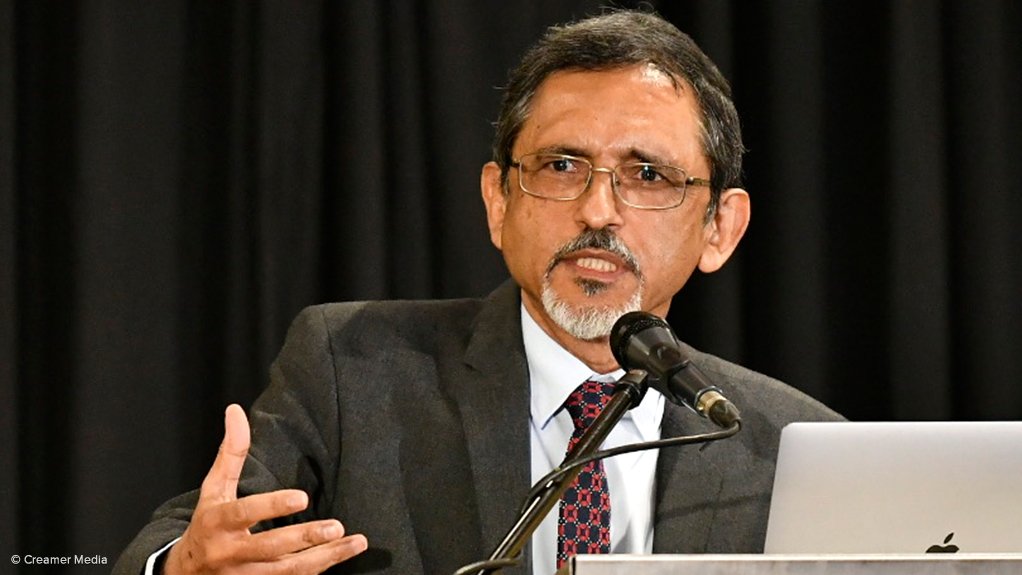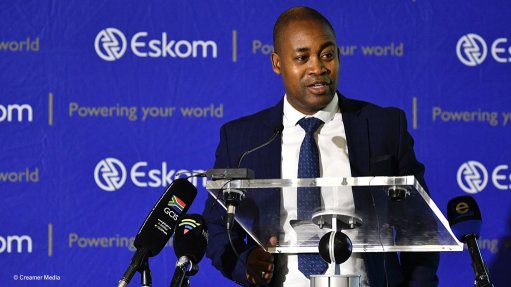South Africa’s New Energy Vehicle Roadmap to be production-led, Patel confirms


Trade, Industry and Competition Minister Ebrahim Patel
Photo by Creamer Media Chief Photographer Donna Slater
Trade, Industry and Competition Minister Ebrahim Patel insists that South Africa’s New Energy Vehicle (NEV) Roadmap is taking shape amid warnings that, absent urgent government decisions on the future support framework, the domestic automotive manufacturing sector is at serious risk.
He has also indicated that the NEV support framework would seek to use and build on the architecture in place under the second phase of the Automotive Production and Development Programme (APDP2) and would be production- rather than consumption-led.
In a presentation to the Presidential Climate Commission, Patel released details of what he described as a roadmap “working document”, which was premised on there being a “compelling” case for South Africa to make the strategic shift to NEVs.
That conclusion was reached following a cost-benefit analysis, showing that it would be more advantageous to transition South Africa’s manufacturing focus away from internal combustion engines (ICEs) to NEVs than to seek to capture a larger slice of the remaining ICE markets as international vehicle manufacturers began upscaling their NEV strategies.
The analysis shows that it will be challenging to secure new ICE export markets that will offset the decline in its main current export markets of the UK and the European Union (EU), which currently absorb 45% of South Africa’s yearly passenger vehicle production.
The UK and the EU have already announced that they will bar sale of ICE vehicles and soft hybrids (cars that use an electric motor alongside a combustion engine, but which cannot run on electric power alone) from 2030 and 2035 respectively. In addition, both are planning to introduce carbon taxes on imports.
Shifting to NEVs, Patels said, would mean that South Africa could either retain or potentially grow an industry that currently contributed between 4% and 5% of gross domestic product and a value chain that employed 100 000 people directly.
Government also estimates that the support programmes it currently uses to incentivise local production have been “roughly fiscally neutral over the last five years”.
“So, we have not closed our eyes to the other options; we have looked at them and we have concluded that it would be in South Africa’s best interest to move to electric vehicles.”
Patel reported that, having reached that conclusion, government was currently focusing on the development of a “competitive support package” to create an enabling environment for the domestic production of NEVs.
He said that there was growing convergence within government on the package, but stressed that it was a “complex” and “challenging” discussion given the country’s fiscal constraints and the many competing needs for scarce Budgetary resources.
“We have moved from a set of costing exercises, to a point that there is a growing convergence within government on what is required for the enabling environment for NEV production in South Africa.”
The fiscal implications of the NEV support package would be announced by Finance Minister Enoch Godongwana, who recently met with local automotive executives to outline the principles that would govern the National Treasury’s approach to the matter.
Patel also reported that government would opt for a production-led model, rather than the consumption-led strategy advocated by various industry stakeholders, whereby growth in domestic demand, supported by lower tariff barriers, triggered investment.
“Our approach is led by a focus on the ‘at-risk export’ markets.
“Let’s get production of EVs right, export to those markets where there is both the spending power and the regulatory incentives to encourage consumption.
“And then off the back of bringing down the prices through what we have been able to achieve through export runs, sell an increasing quantity in the domestic market and, at an appropriate point, look at incentives that will get motorists to shift to EV consumption.”
Government will also seek to build on the APDP2 architecture rather than develop an entirely new framework for NEVs and will also be prioritising the identification of components that can be produced locally, including those that are used in both ICEs and NEVs.
“We have settled on using the APDP and to build on it; adjust it, make some changes and essentially enable it to get the large automakers to shift to electric vehicle production.”
Patel said that government was also conscious of the importance of timing South Africa’s interventions so that they were aligned with investment decisions and lead times of automakers when considering next-generation models.
South Africa would also seek to use part of the $8.5-billion that could flow from the Just Energy Partnership Investment Plan to unlock finance for catalytic NEV projects, including last-mile logistics, specialised vehicles, infrastructure and battery value chains.
Article Enquiry
Email Article
Save Article
Feedback
To advertise email advertising@creamermedia.co.za or click here
Comments
Announcements
What's On
Subscribe to improve your user experience...
Option 1 (equivalent of R125 a month):
Receive a weekly copy of Creamer Media's Engineering News & Mining Weekly magazine
(print copy for those in South Africa and e-magazine for those outside of South Africa)
Receive daily email newsletters
Access to full search results
Access archive of magazine back copies
Access to Projects in Progress
Access to ONE Research Report of your choice in PDF format
Option 2 (equivalent of R375 a month):
All benefits from Option 1
PLUS
Access to Creamer Media's Research Channel Africa for ALL Research Reports, in PDF format, on various industrial and mining sectors
including Electricity; Water; Energy Transition; Hydrogen; Roads, Rail and Ports; Coal; Gold; Platinum; Battery Metals; etc.
Already a subscriber?
Forgotten your password?
Receive weekly copy of Creamer Media's Engineering News & Mining Weekly magazine (print copy for those in South Africa and e-magazine for those outside of South Africa)
➕
Recieve daily email newsletters
➕
Access to full search results
➕
Access archive of magazine back copies
➕
Access to Projects in Progress
➕
Access to ONE Research Report of your choice in PDF format
RESEARCH CHANNEL AFRICA
R4500 (equivalent of R375 a month)
SUBSCRIBEAll benefits from Option 1
➕
Access to Creamer Media's Research Channel Africa for ALL Research Reports on various industrial and mining sectors, in PDF format, including on:
Electricity
➕
Water
➕
Energy Transition
➕
Hydrogen
➕
Roads, Rail and Ports
➕
Coal
➕
Gold
➕
Platinum
➕
Battery Metals
➕
etc.
Receive all benefits from Option 1 or Option 2 delivered to numerous people at your company
➕
Multiple User names and Passwords for simultaneous log-ins
➕
Intranet integration access to all in your organisation

















